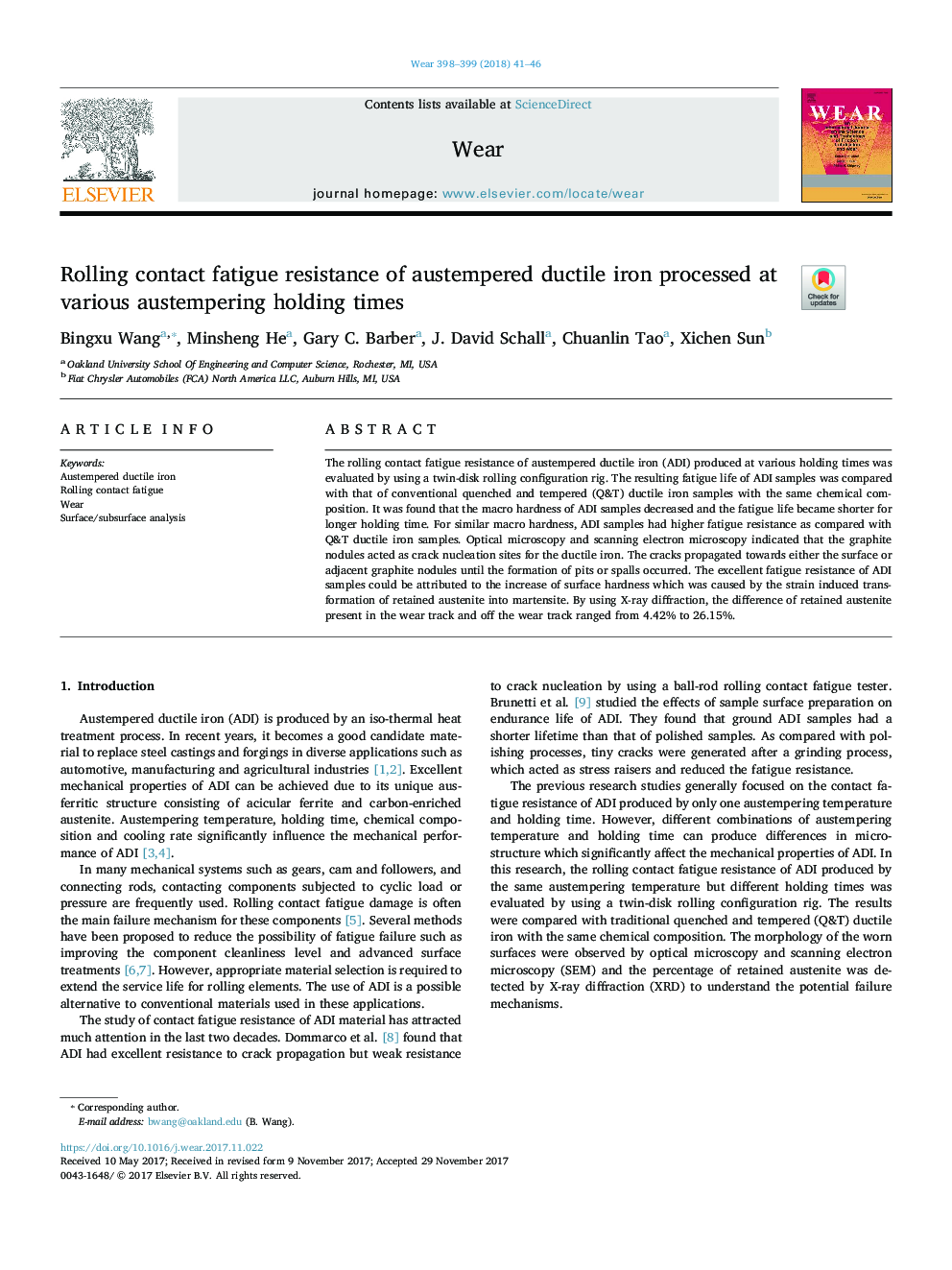| Article ID | Journal | Published Year | Pages | File Type |
|---|---|---|---|---|
| 7003985 | Wear | 2018 | 6 Pages |
Abstract
The rolling contact fatigue resistance of austempered ductile iron (ADI) produced at various holding times was evaluated by using a twin-disk rolling configuration rig. The resulting fatigue life of ADI samples was compared with that of conventional quenched and tempered (Q&T) ductile iron samples with the same chemical composition. It was found that the macro hardness of ADI samples decreased and the fatigue life became shorter for longer holding time. For similar macro hardness, ADI samples had higher fatigue resistance as compared with Q&T ductile iron samples. Optical microscopy and scanning electron microscopy indicated that the graphite nodules acted as crack nucleation sites for the ductile iron. The cracks propagated towards either the surface or adjacent graphite nodules until the formation of pits or spalls occurred. The excellent fatigue resistance of ADI samples could be attributed to the increase of surface hardness which was caused by the strain induced transformation of retained austenite into martensite. By using X-ray diffraction, the difference of retained austenite present in the wear track and off the wear track ranged from 4.42% to 26.15%.
Related Topics
Physical Sciences and Engineering
Chemical Engineering
Colloid and Surface Chemistry
Authors
Bingxu Wang, Minsheng He, Gary C. Barber, J. David Schall, Chuanlin Tao, Xichen Sun,
